LED vs HID Headlamps
#32
Taken from How Stuff Works
Much of the challenge behind making LED systems a common reality is dealing with heat. While consumers see LEDs as a "cool" light source, they actually produce a lot of heat -- but it's at the back end of the unit rather than at the bulb surface. Stacking several LED units together and allowing for a cumulative heat build-up can quickly shorten the life of these components.
Manufacturers are now grappling with ways to dissipate that heat, including auxiliary fans and vented headlight units.
#33
Lexus Champion
Join Date: Feb 2006
Location: San Diego, CA
Posts: 2,553
Likes: 0
Received 0 Likes
on
0 Posts
If there's that much heat being produced, then there has to be a considerable amount of power being used as well. You aren't going to produce that much heat if they don't use a decent amount of power. So while the LEDs themselves may be efficient, what about the supporting hardware (ballasts?)
I'd be very interested to know the actual power consumption of the entire unit compared to HIDs. I'd also like to know what the power consumption would be if they produced the same lumens as HIDs. If we put it on a lumens per watt scale, I doubt they're much more efficient than HIDs
I'd be very interested to know the actual power consumption of the entire unit compared to HIDs. I'd also like to know what the power consumption would be if they produced the same lumens as HIDs. If we put it on a lumens per watt scale, I doubt they're much more efficient than HIDs
#34
Lexus Champion
iTrader: (3)
The one great thing about LEDs when used for headlights, is that LEDs are naturally a directional source of light. With a LED you don't need a reflector, because all the light travels in the same direction. With halogen or HIDs bulbs, the light travels in every direction, and therefore a complex reflector is required that captures and redirects that light - but in the process at least 20% of light is still lost. As such, LED can provide comparable light output as HID, even with much less total lumen.
One big problem with LEDs however, is that their initial brightness starts to degrade very quickly, and in a couple of years they won't be anywhere as bright as they were when new. Whereas an HID bulb can easily last 10 years and stay bright as new.
One big problem with LEDs however, is that their initial brightness starts to degrade very quickly, and in a couple of years they won't be anywhere as bright as they were when new. Whereas an HID bulb can easily last 10 years and stay bright as new.
#35
Lexus Champion
iTrader: (3)
I don't understand the fascination with LED headlamps either. From what I have read so far, the only real advantage for LEDs are that they consume less power, which makes them ideal for electric and hybrid cars. Although the bulb runs cooler, LED housings do generate a lot of heat on the back end. I know my SureFire LED flashlight runs extremely hot if I leave it on for more than a few minutes at a time. So we'll have to see about life.
Taken from How Stuff Works
Much of the challenge behind making LED systems a common reality is dealing with heat. While consumers see LEDs as a "cool" light source, they actually produce a lot of heat -- but it's at the back end of the unit rather than at the bulb surface. Stacking several LED units together and allowing for a cumulative heat build-up can quickly shorten the life of these components.
Manufacturers are now grappling with ways to dissipate that heat, including auxiliary fans and vented headlight units.
Taken from How Stuff Works
Much of the challenge behind making LED systems a common reality is dealing with heat. While consumers see LEDs as a "cool" light source, they actually produce a lot of heat -- but it's at the back end of the unit rather than at the bulb surface. Stacking several LED units together and allowing for a cumulative heat build-up can quickly shorten the life of these components.
Manufacturers are now grappling with ways to dissipate that heat, including auxiliary fans and vented headlight units.
#36
LEDs are the future.
so sometimes, you need to pay higher price of having the future now..
LEDs can switch on (and hit max brightness) in seconds and off straight after
halogens cant reach maximum brightness in seconds but it is find will short bursts of "on" and off"
xenons will die if you flick it on and off.
Xenons have a theoretical lifetime of 2000 hours. but most of the time, its around ~1000 hours. due to the switching on and off effect.
LEDs is meant to last the life of the car. around 10,000 hours. costs 2-5 times xenons
Halogens usually last around 800 hours. and cost less than 10% of xenons.
compromise?
so sometimes, you need to pay higher price of having the future now..
LEDs can switch on (and hit max brightness) in seconds and off straight after
halogens cant reach maximum brightness in seconds but it is find will short bursts of "on" and off"
xenons will die if you flick it on and off.
Xenons have a theoretical lifetime of 2000 hours. but most of the time, its around ~1000 hours. due to the switching on and off effect.
LEDs is meant to last the life of the car. around 10,000 hours. costs 2-5 times xenons
Halogens usually last around 800 hours. and cost less than 10% of xenons.
compromise?
#38
LEDs still produce far less heat than HID or Halogen, but unlike HID or halogen, LEDs can't sustain its own heat - a 10w LED without a heatsink will fail almost instantly. A high power LED with inadequate cooling system will degrade in brightness in a very short period of time.
As for the life span of HIDs of 2,000 or even 1,000 hours, that will last me at least 3 to 6 years. Hell, in 13 years, I have never had to change the the halogens bulbs in my Camry. So lifespan isn't really an issue for me. Besides replacing HID bulbs isn't that big of a deal cost wise or time wise.
LEDs are definitely on the bleeding edge of technology but it may be a while before it becomes leading edge technology for headlights. My $0.02
#39
Just to be clear I'm a huge fan of LEDs. My SureFire tactical flashlight is a marvel of LED technology. It's enough to blind someone. Give it some time and it will be in all cars, just like HIDs.
#40
Lexus Champion
Join Date: Feb 2006
Location: San Diego, CA
Posts: 2,553
Likes: 0
Received 0 Likes
on
0 Posts
I'm an LED fan as well, but after reading the pros/cons... Not in this application. Fading brightness is kind of scary considering how much it may cost to replace.
#41
The amount of heat generated, measured in relation to the amount of light (lumens), is directly related to the efficiency. In fact, efficiency is really just that, i.e., the ratio of light to heat. Everything I've ever read about LED's says that they are more efficient than any other type of lighting. They are being advocated for home lighting because they are considerably more efficient than fluorescent, which already is vastly more efficient than any type of incandescent lighting. Any type of light that is based fundamentally on the generation of electromagnetic radiation in the visible spectrum (i.e., light) in conjunction with Ohmic heating of a conductor is going to be inherently inefficient, i.e., is going to produce more heat relative to the amount of light, in comparison to most any other type of lighting. Thus, if there is an issue with heat generation with LED lighting (I don't know whether there is or isn't), it likely is not with the amount of heat per se, but rather with the amount of heat that the LED's can tolerate. I do not have knowledge of this, and even though this is the first that I have heard of this, for all I know it is correct. Regardless, the fact is that for no more reason than the greater efficiency, LED lighting is inherently superior. Everything else that might be less than ideal about a particular source of light can be corrected through appropriate engineering effort. In the final analysis, it is the efficiency that matters. Yet, it is evidently true that with the present state of development of LED engineering, the amount of light generated per individual LED (element) is such that the quantity of LEDs that you need for a particular application can be impractical. Evidently, this is true for the application of interest here: car headlights. That being what it is, the approach that could be made to work would be to make the headlights take up more of the front of the car. That is certainly doable, and the individual LEDs would be in individual reflectors with diffraction lens in front. It is doable, no question about it. But, it would substantially alter the aesthetics of the car, and presumably it would be a lot more expensive. The cost will continue to come down. Maybe the trend toward smaller headlights will reverse. Maybe the headlights will evolve into a single, large headlight, covering the front of the car from side to side, but only an inch or two in height, and just above the grill.
#42
Lexus Champion
Join Date: Mar 2006
Location: California
Posts: 1,674
Likes: 0
Received 0 Likes
on
0 Posts
Agreed, my surefire M3LT with 800 lumens outshines my HID on my lexus. I can imagine 2-3 of those suckers through a projector lens will be more powerful than the HID system?
#43
Lights can also have a reflector, and/or lens.
There are three types of reflector/lens combinations.
1) The conventional reflector, with a plain flat lens.
We all know what these look like.
2) An aspherical [convex] lens, with NO reflector at all.
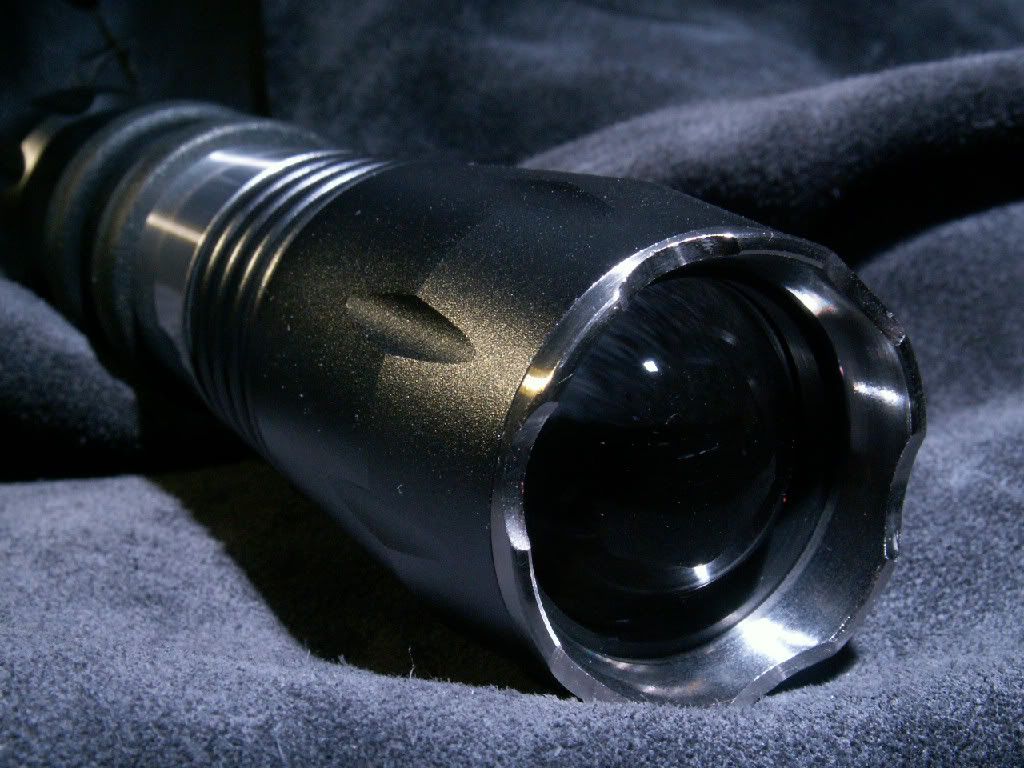
3) A hybrid combination of a reflector and special lens using Total Internal Reflection TIR in a Surefire UBT3.
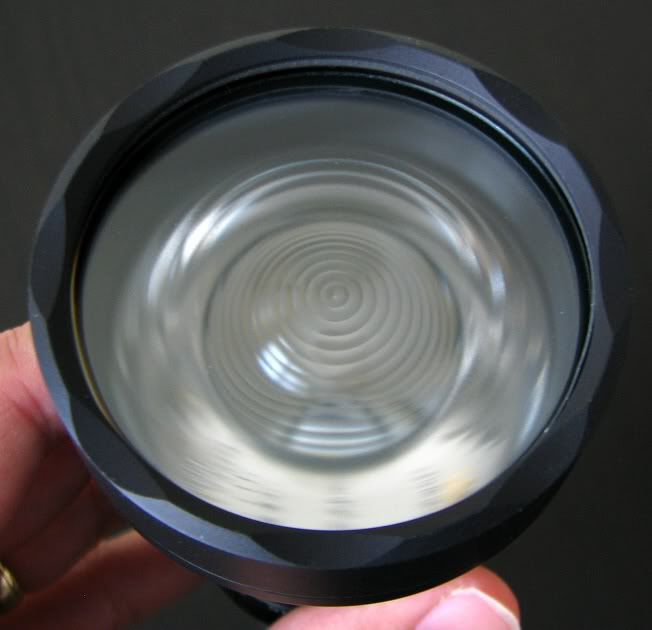
1) The conventional reflector delivers excellent transverse flood/spill of light.
2) The aspherical lens light has NO reflector at all.
The apsherical lens concentrates the beam of light into a small and tight hot spot - the exact same shape of the LED emitter.
It is a spitting image of the square LED emitter.
However, aspherical lens designs have NO lateral flood/spill of light!
Aspherical lights are almost LASER-like.
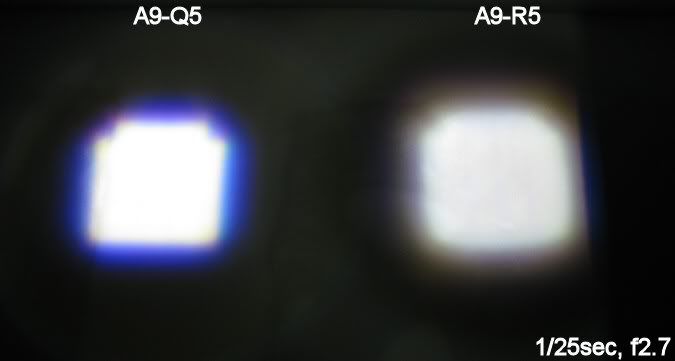
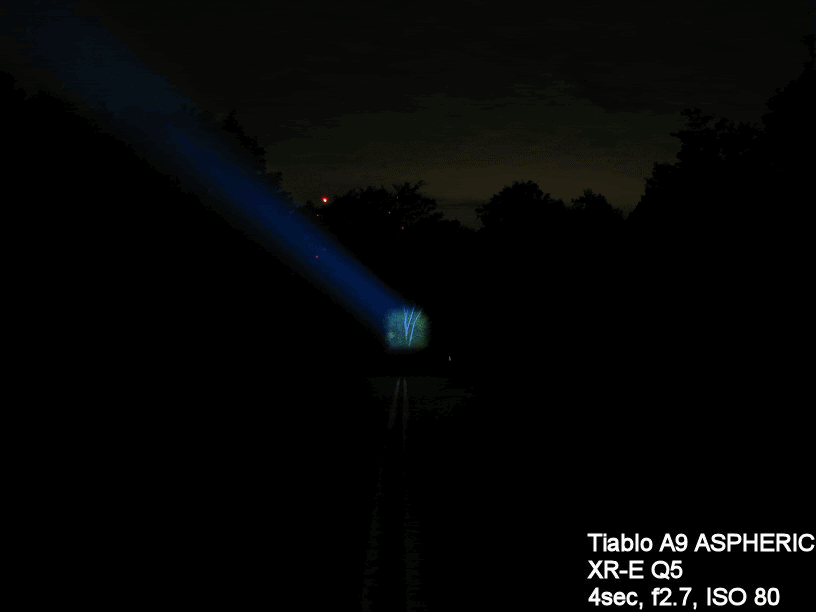
3) A Surefire M3LT, if I'm not wrong, uses the third type of reflector/lens design.
It uses a hybrid design - a combination of reflector and special lens.
It produces a beam that is almost entirely hot spot only, with very little lateral spill/flood.
This is great for military purposes, and attaching with rifle mounts, and used in conjunction with rifle scopes, however for automotive headlight purposes, there is inadequate spill.
The Thrunite Catapult below is a conventional reflector design with a flat lens; note the wide lateral spill/flood of light.
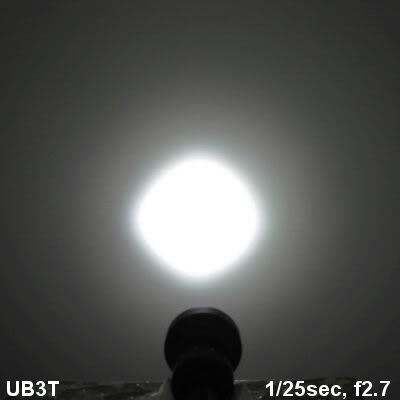

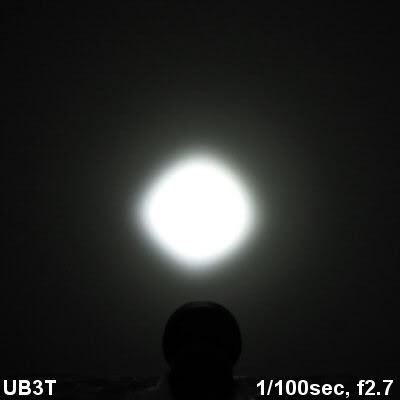

Thus, the Surefire 3MLT hybrid reflector/lens Total Internal Reflection TIR design is impractical for use in motor cars, which need lateral flood/spill, rather than longitudinal throw.
A reflector and a lens is similar to the gearbox of the car.
The gearbox - the input and output power is always the same - less some of the frictional losses.
A reflector/lens - the input and output power in Lumens is the same too - less some inefficiency losses from the reflector and lens combo.
Likewise, the reflector/lens concentrates the total volume of light into a tight hotpsot.
The tighter and smaller surface area the hotspot, the more intense the beam will be.
Just as a gearbox increases the torque, while reducing the RPM, likewise the reflector/lens combo increases the intensity of light, while decreasing the surface area of illumination in square meters.
However, automotive use doesn't want a tight hotspot; automotive use needs a wide lateral spill of light.
Though the Surefire 3MLT has a more intense beam than a car, it would take dozens of 3MLT's to deliver the same surface area of illumination in square meters as a 35 Watt HID delivering more than 3000 lumens.
Thus a car headlamp cannot use fancy aspherical lens optics with an almost laser-like beam, and zero lateral spill.
Nor can car headlamps use fancy patented Surefire flashlight TIR Total Internal Reflection hybrid reflector/lens optics, with almost no lateral spill of light.
Car headlamps must use the conventional plain Jane reflector with a plain Jane flat glass/plastic lens, to maximize the lateral flood/spill of light.
If we remove the reflector altogether, we would truly maximize the lateral flood/spill of light, however, there would be inadequate longitudinal throw.
Generally speaking, LED for automotive use has great efficiency - better than HID's.
However LED automotive use is still very controversial.
It doesn't have as much output, and it dims with age.
LED's also deliver a different spectrum of tint; it is more towards the blue/cool range in color temperature.
To make LED's warmer [nee yellower/reder], phosphor is added - however, this decreases the overall Lumen efficiency.
Some speculate that the bluish cooler tints cause the pupils to constrict, and this in turn increases the depth of field DOF to improve night vision, however this remains largely controversial...
Last edited by peteharvey; 08-27-13 at 03:39 PM.
#44
Peteharvey knows his lighting. Props.
#45
PeteHarvey very obviously knows a lot about lighting, and about LEDs in particular.
There are many types of reflectors, and many types of lenses to place in front.
Back when I was young, car headlights all had a great big filament and a big round reflector. The reflector was supposedly in the shape of a parabola, i.e., a parabolic reflector. When so, if the filament is located precisely at the focal point of the parabola, the reflected light will form a beam that neither converges nor diverges. It is the same as the parabolic mirror in a Newtonian (reflector) telescope. The parabola is sufficiently complete such that the majority of the light radiated from the filament strikes the reflector and is reflected in that manner. The light reaching elsewhere is the light that does not hit the reflector. But, there also is a lens in front, that scatters or spreads the light to a particular extent.
An obvious example of a lens that serves the purpose of scattering light is the small diffraction lens that you see covering the discharge tube in most any camera flash. The principle is much the same. A parabolic reflector behind, and a diffraction lens in front.
The neatest example I know of, of a diffraction lens, is the giant glass lenses that are used in lighthouses. Reflectors are also used to avoid wasting light that would otherwise go up into space, or strike the ceiling of the lighthouse. The goal of the lens is to direct more of the light to a higher angle, and thereby to point further out into the sea, where greater light is needed because of the natural fall off with distance. The surface area of a sphere scales as the square of the radius. If the radius doubles, the surface area of a sphere increases by a factor of 4. If a light source is placed at the center of the sphere, and the light power is the same for both radii, the light power for a given actual area on the surface, measure in dimensional units of square inches or whatever as opposed to degrees of arc, will be 1/4 as great for the sphere with radius twice greater than the other radius. More generally, light power per unit surface area falls off as the inverse square of distance. Which is another way of saying that if ship B is twice as far from the lighthouse as ship A, the lighthouse will appear only 1/4 fourth as bright to ship B. This would be the case if you measure the light intensity with a light meter, but visual perception of light intensity is not linear and throws another variable into the mix. But notwithstanding the effect of human perception of light intensity, it is obviously desirable for the light emitted by the lighthouse to be concentrated greatly at higher angle, for angles below the horizontal, such that right at the horizontal, the concentration of light is greatest. It takes a very special kind of lens to do this.
http://www.lighthouselens.com/items/index.php?id=67
http://en.wikipedia.org/wiki/Fresnel_lens
http://vallejogallery.com/item.php?id=1781
http://en.wikipedia.org/wiki/Augustin-Jean_Fresnel
And most interesting of all is the Lighthouse at Alexandria, one of the Seven Wonders of the World in ancient times. It was built around 270 BCE, and was around 400 ft high. This is known with certainty, because it survived in main part until the 14th century AD, when it was destroyed by an earthquake. It survived until then, so there can be no question as to its height or location, or to when it was built, approximately, during the Ptolemaic Egypt era. It stood for more than one and one-half millennia, and was in good condition and functional for about two-thirds of that time, apparently. It did use some sort of reflector, and supposedly it was visible from 40 miles out to sea, which is perfectly feasible. The mirror must have been movable, because during the day, it reflected sunlight. Most likely it could be rotated freely and was mounted on a hinge that permitted the vertical tilt to be changed. I would guess it was made of copper, but I don't know. There were also tales about it having the ability to set fire to ships by directing light. That sounds crazy and almost certainly not true. But it does not seem completely out of the question that during the daytime in the bright sun, this could have been true, since all it really would have required is for the mirror to have been large enough and to have been precise in its shape. It is not out of the question, but would have ceased to work as soon as the sky got cloudy. But it is fun to speculate about the possibility of there being other mirrors on the ground around it, reflecting additional sun light up to the main mirror at the top of the tower, and what they would have made possible.
There are many types of reflectors, and many types of lenses to place in front.
Back when I was young, car headlights all had a great big filament and a big round reflector. The reflector was supposedly in the shape of a parabola, i.e., a parabolic reflector. When so, if the filament is located precisely at the focal point of the parabola, the reflected light will form a beam that neither converges nor diverges. It is the same as the parabolic mirror in a Newtonian (reflector) telescope. The parabola is sufficiently complete such that the majority of the light radiated from the filament strikes the reflector and is reflected in that manner. The light reaching elsewhere is the light that does not hit the reflector. But, there also is a lens in front, that scatters or spreads the light to a particular extent.
An obvious example of a lens that serves the purpose of scattering light is the small diffraction lens that you see covering the discharge tube in most any camera flash. The principle is much the same. A parabolic reflector behind, and a diffraction lens in front.
The neatest example I know of, of a diffraction lens, is the giant glass lenses that are used in lighthouses. Reflectors are also used to avoid wasting light that would otherwise go up into space, or strike the ceiling of the lighthouse. The goal of the lens is to direct more of the light to a higher angle, and thereby to point further out into the sea, where greater light is needed because of the natural fall off with distance. The surface area of a sphere scales as the square of the radius. If the radius doubles, the surface area of a sphere increases by a factor of 4. If a light source is placed at the center of the sphere, and the light power is the same for both radii, the light power for a given actual area on the surface, measure in dimensional units of square inches or whatever as opposed to degrees of arc, will be 1/4 as great for the sphere with radius twice greater than the other radius. More generally, light power per unit surface area falls off as the inverse square of distance. Which is another way of saying that if ship B is twice as far from the lighthouse as ship A, the lighthouse will appear only 1/4 fourth as bright to ship B. This would be the case if you measure the light intensity with a light meter, but visual perception of light intensity is not linear and throws another variable into the mix. But notwithstanding the effect of human perception of light intensity, it is obviously desirable for the light emitted by the lighthouse to be concentrated greatly at higher angle, for angles below the horizontal, such that right at the horizontal, the concentration of light is greatest. It takes a very special kind of lens to do this.
http://www.lighthouselens.com/items/index.php?id=67
http://en.wikipedia.org/wiki/Fresnel_lens
http://vallejogallery.com/item.php?id=1781
http://en.wikipedia.org/wiki/Augustin-Jean_Fresnel
And most interesting of all is the Lighthouse at Alexandria, one of the Seven Wonders of the World in ancient times. It was built around 270 BCE, and was around 400 ft high. This is known with certainty, because it survived in main part until the 14th century AD, when it was destroyed by an earthquake. It survived until then, so there can be no question as to its height or location, or to when it was built, approximately, during the Ptolemaic Egypt era. It stood for more than one and one-half millennia, and was in good condition and functional for about two-thirds of that time, apparently. It did use some sort of reflector, and supposedly it was visible from 40 miles out to sea, which is perfectly feasible. The mirror must have been movable, because during the day, it reflected sunlight. Most likely it could be rotated freely and was mounted on a hinge that permitted the vertical tilt to be changed. I would guess it was made of copper, but I don't know. There were also tales about it having the ability to set fire to ships by directing light. That sounds crazy and almost certainly not true. But it does not seem completely out of the question that during the daytime in the bright sun, this could have been true, since all it really would have required is for the mirror to have been large enough and to have been precise in its shape. It is not out of the question, but would have ceased to work as soon as the sky got cloudy. But it is fun to speculate about the possibility of there being other mirrors on the ground around it, reflecting additional sun light up to the main mirror at the top of the tower, and what they would have made possible.


